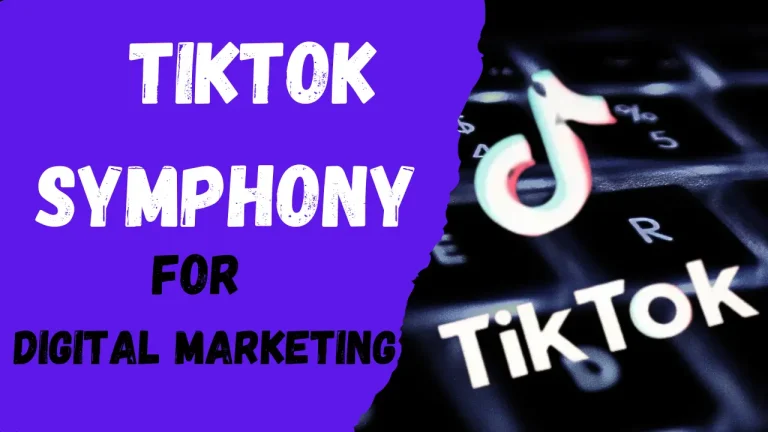Nowadays, to do well online, businesses need to use a smart and advanced digital marketing strategy. It’s not a choice anymore; it’s a must. This guide is like a helpful tool, explaining the important role of advanced digital marketing and giving businesses a clear plan to create strategies that work for their goals and connect with their audience. Let’s start our journey towards learning how to make an advanced digital marketing strategy.
Steps To Create A Digital Marketing Strategy
1. Audience Analysis
To analyse your audience really is a single way to achieve your digital marketing strategy goals. Right audience information is key to a successful online business plan. It’s not just about basic things like age or location; it’s all about your audience interests and their awareness about your business and it also matters on which stage of the marketing funnel they stand. And also your need to understand what your customers care about, what they like, and how they behave.
In this age of internet data is a superpower, a company who has more effective data about its audience will develop a better plan for its audience and get more business . By creating detailed profiles of your typical customers based on this information, called buyer personas, businesses can customise their marketing to fit what customers want and expect. So in creating an effective digital marketing strategy you need to know where your customer stands in the marketing funnel and you need to plan a different strategy for different types of audience.
2. Goal Setting
When you are developing your digital marketing strategy you must ensure that your digital marketing goals match up with your overall business objectives. Goal setting is another important and technical set in crafting a sound marketing strategy, when you know your audience interest and you categorise them according to their interests in the first step it’s easy for you to set your business goals.
If your customers are falling at the Top funnel you can set goals to provide them information about your businesses and if they stand in Medal of the funnel or Bottom of the funnel you can set goals to address them to consider your services and buy respectively. This is a crucial step because it shows exactly how marketing activities directly contribute to the overall growth of the business.
3. Market Research
Competitor Analysis
To stay ahead in the digital race, you must read about your competitor’s business. If you aren’t aware of your competitor’s strengths and weaknesses it’s very difficult to beat him. When you know your competitor’s weaknesses you must develop a strategy to make his weakness your strength and it’s all about success in business. In This step if you successfully crack any loophole of your competitor you can make him down or if you make some mistake may you face its loss. So competitors’ knowledge empowers businesses’ thinking and gives you an idea to provide your audience with value.
Industry Trends
Your awareness of industry trends is a keypoint in the requirements of being successful in the digital realm. Consumer behaviour, technology, and market demands are in a constant state of flux. Adapting marketing strategies to align with these trends ensures relevance and positions the business as an industry leader.
SWOT Analysis
Conducting a SWOT analysis is a strategic need. This analysis, focusing on internal strengths and weaknesses, as well as external opportunities and threats, provides a comprehensive understanding of the business environment. When we are aware of this knowledge, we plan our digital marketing strategy to utilise strengths and opportunities while reducing weaknesses and threats.
Digital Channel Selection

4. Content Development
Content Creation
Planning content creation using a calendar ensures a steady and strategic approach. A carefully crafted content calendar not only assists in organising content creation but also in syncing it with important events, seasons, and overall marketing goals.
Focus Audience Content
Making content that connects with the people you want to reach means knowing what they like, what’s bothering them, and how they like to talk. This audience-focused method ensures that the content isn’t just full of information but also stirs up emotions and gets people interested.
Multimedia Integration
Adding things like videos, infographics, and interactive features to your content makes it more interesting. People like different things, so using different types of media appeals to a wider audience and keeps them engaged.
5. SEO (Search Engine Optimization)
Keyword Research
Thorough keyword research is the cornerstone of effective SEO. Identifying and targeting relevant keywords ensures that content is discoverable by search engines, leading to increased visibility and organic traffic.
On-page and Off-page Optimization
Optimising both on-page and off-page elements is vital for enhancing website visibility, credibility, and overall search engine ranking. A clear approach to SEO Services ensures a well-rounded digital presence.
Local SEO
For businesses focusing on nearby customers, using local SEO strategies is crucial. Making sure you show up in local searches and using tools like Google My Business helps your business be more visible in local search results.
6. Data Analytics

Tracking Tools
Using strong analytics tools, like Google Analytics, is really important for keeping track and measuring how well your digital marketing strategy is doing. These tools give you useful information about how many people visit your website, what they do there, and how well different campaigns are working.
Data Interpretation
Gathering data is one step, but understanding it is another. Being able to pull important insights from data helps businesses make smart decisions, find areas where they can do better, and improve their strategies for better outcomes.
Data-Driven Decision Making
Using data to make decisions ensures that marketing strategies are based on solid insights. Continuously analysing and adjusting based on this data leads to more effective campaigns over time.
7. Marketing Automation
Tools and Platforms
Using marketing automation tools helps make repetitive tasks easier, freeing up marketing teams to concentrate on strategy, creativity, and connecting with customers. Platforms such as HubSpot and Marketo provide all-in-one solutions for automation.
Email Automation
Automating email campaigns makes things more efficient and personalised. Emails that are sent based on what users do, along with content customised for each person, help create a more focused and effective communication strategy.
Social Media Marketing
Planning and scheduling social media posts ahead of time ensures that your online presence stays steady. This smart way of managing social media boosts visibility, engagement, and the effectiveness of your social media marketing efforts.
8. Online Presence
Brand Consistency
Keeping your brand consistent on all online platforms is really important for establishing and strengthening your brand identity. When your messages, visuals, and tone are the same everywhere, it creates a unified brand experience. This helps build trust and makes your brand more recognizable.
Audience Engagement
Engaging with your audience is like a conversation – it goes both ways. Answering comments, messages, and feedback quickly makes the brand feel more human and strengthens the connection with the audience.
Reputation Management
Taking care of your online reputation means actively dealing with customer feedback, whether it’s positive or negative. Being open and quickly resolving problems helps maintain a positive brand image.
9. Budgeting and Resource Allocation
Channel-wise Budget Allocation
Distributing budgets according to how well each marketing channel performs and its potential optimises resources. Using data to decide on budget allocation makes sure that investments match with the channels that bring the most significant return on investment.
Expense Tracking and Optimization
Keeping a close eye on expenses and fine-tuning the budget ensures resources are used efficiently. This continuous evaluation lets businesses adjust their spending based on performance and changes in the market.
10. Strategy Monitoring and Adaptation

Regular Performance Reviews
Regularly reviewing performance is crucial to evaluate how well digital marketing strategy is working. By comparing what actually happened with the goals they set, businesses can find areas to improve and make things work better.
Adapting to Industry Changes
Keeping up with changes in the industry is crucial to keep a digital marketing strategy relevant and effective. Knowing about new technologies, shifts in how consumers act, and emerging trends should all guide adjustments to the strategy.
Continuous Improvement
Adopting a mindset of always getting better means learning from both what works and what doesn’t. Changing strategies based on what you learn from analyzing data and getting feedback from the market helps the business keep growing and adapting to the always-changing digital world.
You Also Can Read it: Means of Advance Digital Marketing
Conclusion
Creating an advanced digital marketing strategy is a comprehensive task that needs a well-rounded approach. Success comes from combining what you know about your audience, doing market research, and using digital channels strategically in the ever-changing online world. Keeping an eye on how things are going, adjusting to changes, and always trying to get better are crucial. In the digital world, a good strategy isn’t just a plan; it’s the key to handling challenges and taking advantage of opportunities in the always-evolving online landscape.







